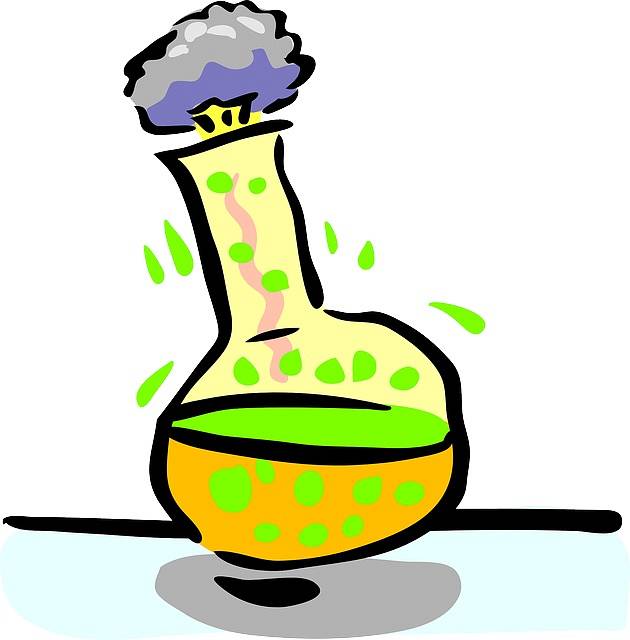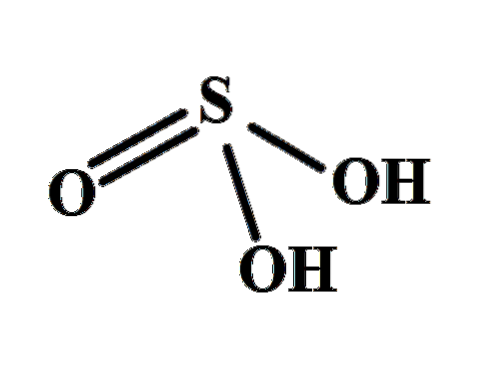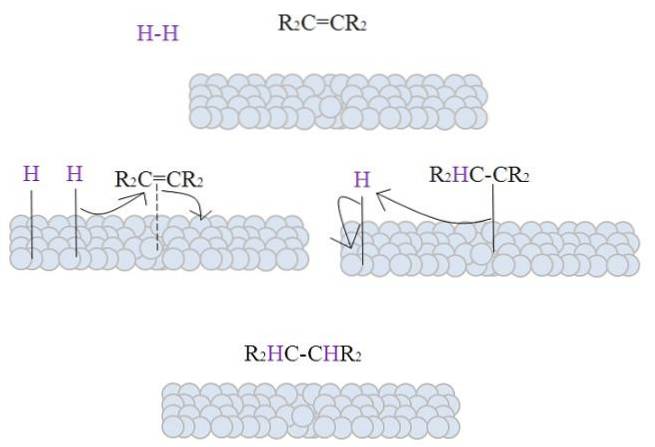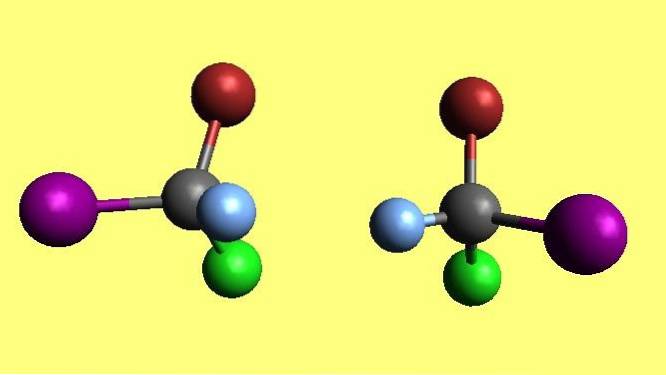
What is enthalpy of formation? (With exercises)
The enthalpy of formation is the change that enthalpy undergoes in the formation of a mole of a compound or substance under standard conditions. The standard pressure condition is understood to be when the formation reaction is carried out at atmospheric pressure of one atmosphere and at a room temperature of 25 degrees Celsius or 298.15 Kelvin..
The normal state of reactive elements in a formation reaction refers to the most common state of aggregation (solid, liquid or gaseous) of these substances under standard conditions of pressure and temperature..
-

In the reaction of formation of a compound, heat is exchanged with the environment. Source: pixabay
Normal state also refers to the most stable allotropic form of these reactive elements under standard reaction conditions..
The enthalpy H is a thermodynamic function that is defined as the internal energy U plus the product of the pressure P and the volume V of the substances that take part in the chemical reaction of formation of a substance mole:
H = U + P ∙ V
Enthalpy has dimensions of energy and in the International System of measurements it is measured in Joules.
Article index
- 1 Standard enthalpy
- 1.1 Heat of formation
- 2 Thermochemical equations
- 2.1 Important considerations
- 3 Solved exercises
- 3.1 -Exercise 1
- 3.2 -Exercise 2
- 4 References
Standard enthalpy
The symbol for enthalpy is H, but in the specific case of enthalpy of formation it is denoted by ΔH0f to indicate that it refers to the change experienced by this thermodynamic function in the reaction of formation of a mole of a certain compound under standard conditions.
In the notation, the superscript 0 indicates the standard conditions, and the subscript f indicates the formation of a mole of substance starting from the reactants in the state of aggregation and the most stable allotropic form of the reactants under the standard conditions..
Heat of formation
The first law establishes that the heat exchanged in a thermodynamic process is equal to the variation of the internal energy of the substances involved in the process plus the work done by these substances in the process:
Q = ΔU + W
In the present case, the reaction is carried out at constant pressure, specifically at the pressure of one atmosphere, so the work will be the product of the pressure and the change in volume.
Then the heat of formation of a certain compound that we will denote by Q0f is related to the change in internal energy and in volume as follows:
Q0f = ΔU + P ΔV
But remembering the definition of the standard enthalpy we have:
Q0f = ΔH0f
Difference between enthalpy and heat of formation
This expression does not mean that the heat of formation and the enthalpy of formation are the same. The correct interpretation is that the heat exchanged during the formation reaction caused a change in the entropy of the substance formed relative to the reactants under standard conditions..
On the other hand, since enthalpy is an extensive thermodynamic function, the heat of formation always refers to one mole of the compound formed..
If the formation reaction is exothermic, then the enthalpy of formation is negative.
On the contrary, if the formation reaction is endothermic, then the enthalpy of formation is positive..
Thermochemical equations
In a thermochemical formation equation, not only the reactants and products must be indicated. In the first place, it is necessary that the chemical equation is balanced in such a way that the amount of the compound formed is always 1 mole.
On the other hand, the state of aggregation of reactants and products must be indicated in the chemical equation. If necessary, the allotropic form of the same should also be indicated, since the heat of formation depends on all these factors..
In a thermochemical formation equation the enthalpy of formation must also be indicated.
Let's look at some examples of well-posed thermochemical equations:
H2 (g) + ½ O2 (g) → H2O (g); ΔH0f = -241.9 kJ / mol
H2 (g) + ½ O2 (g) → H2O (l); ΔH0f = -285.8 kJ / mol
H2 (g) + ½ O2 (g) → H2O (s); ΔH0f = -292.6 kJ / mol
Important considerations
- All are balanced based on the formation of 1 mole of product.
- The aggregation status of the reagents and the product is indicated.
- The enthalpy of formation is indicated.
Note that the enthalpy of formation depends on the state of aggregation of the product. Of the three reactions, the most stable under standard conditions is the second.
Since what matters in a chemical reaction and in particular in a formation reaction is the entropy change and not the entropy itself, it is agreed that pure elements in their molecular form and state of natural aggregation under standard conditions have formation entropy. null.
Here are some examples:
O2 (g); ΔH0f = 0 kJ / mol
Cl2 (g); ΔH0f = 0 kJ / mol
Na (s); ΔH0f = 0 kJ / mol
C (graphite); ΔH0f = 0 kJ / mol
Solved exercises
-Exercise 1
Knowing that for the formation of ethene (C2H4) it is required to provide 52 kJ of heat for each mole and that its reactants are hydrogen and graphite, write the thermochemical equation for the formation of ethene.
Solution
First we raise the chemical equation and balance it based on one mole of ethene.
Then we take into account that it is required to provide heat for the formation reaction to take place, which indicates that it is an endothermic reaction and therefore the formation entropy is positive..
2 C (solid graphite) + 2 H2 (gas) → C2H4 (gas); ΔH0f = +52 kJ / mol
-Exercise 2
Under standard conditions, hydrogen and oxygen are mixed in a 5-liter container. Oxygen and hydrogen react completely without any of the reactants to form hydrogen peroxide. 38.35 kJ of heat was released into the environment in the reaction.
State the chemical and thermochemical equation. Calculate the entropy of formation of hydrogen peroxide.
Solution
The hydrogen peroxide formation reaction is:
H2 (gas) + O2 (gas) → H2O2 (liquid)
Note that the equation is already balanced based on one mole of product. That is, it takes one mole of hydrogen and one mole of oxygen to produce one mole of hydrogen peroxide..
But the problem statement tells us that hydrogen and oxygen are mixed in a 5-liter container under standard conditions, so we know that each of the gases occupies 5 liters.
Using standard conditions to obtain the thermochemical equation
On the other hand, by standard conditions pressure of 1 atm = 1.013 x 10⁵ Pa and temperature of 25 ° C = 298.15 K.
Under standard conditions 1 mole of ideal gas will occupy 24.47 L, as can be verified from the following calculation:
V = (1 mol * 8.3145 J / (mol * K) * 298.15 K) / 1.03 x 10⁵ Pa = 0.02447 m³ = 24.47 L.
Since 5 L is available, then the number of moles of each of the gases is given by:
5 liters / 24.47 liters / mol = 0.204 moles of each of the gases.
According to the balanced chemical equation, 0.204 moles of hydrogen peroxide will be formed, releasing 38.35 kJ of heat to the environment. That is, to form one mole of peroxide, 38.35 kJ / 0.204 moles = 188 kJ / mole are required.
Also, since heat is released into the environment during the reaction, then the enthalpy of formation is negative. Resulting finally the following thermochemical equation:
H2 (gas) + O2 (gas) → H2O2 (liquid); ΔH0f = -188 kJ / mol
References
- Chestnuts E. Enthalpy in chemical reactions. Recovered from: lidiaconlaquimica.wordpress.com
- Thermochemistry. Enthalpy of reaction. Recovered from: recursostic.educacion.es
- Thermochemistry. Definition of standard reaction enthalpy. Recovered from: quimitube.com
- Thermochemistry. Definition of enthalpy of formation and examples. Recovered from: quimitube.com
- Wikipedia. Standard enthalpy of reaction. Recovered from: wikipedia.com
- Wikipedia. Formation enthalpy. Recovered from: wikipedia.com



Yet No Comments